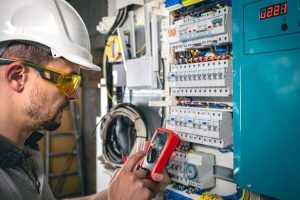Reading an electrical inspection report can be a confusing and overwhelming task, especially if you’re not familiar with the technical lingo and terms used. But don’t fret, in this post we’ll guide you through the process of decoding your electrical inspection report and help you understand the results in a concise and relatable manner.
What is an Electrical Inspection Report and Why is it Important?
Before diving into the report itself, it’s important to understand the purpose of an electrical inspection. This type of inspection is conducted to assess the overall safety and functionality of a building’s electrical system. The inspector will look for any potential hazards, code violations, and areas in need of repair or upgrade.
Navigating the Electrical Inspection Report: A Guide to its Format
Electrical inspection reports typically follow a standardized format, making it easier to navigate and understand. The report will usually include a cover page, an executive summary, a detailed inspection report, and any necessary recommendations or citations.
Decoding the Detailed Inspection Report: Understanding Your Electrical System
The detailed inspection report will include information on the electrical system’s components, such as wiring, circuits, panels, and fixtures. The inspector will note any issues found, such as outdated wiring, overloading of circuits, and any potential fire hazards. It’s important to pay close attention to this section as it will give you a clear picture of the current state of your electrical system.
Critical Components of the Electrical Inspection Report: Code Violations Explained
Code violations are a critical part of the electrical inspection report, as they indicate any areas that don’t meet local building and safety codes. Common code violations include improper grounding, lack of GFCI protection, and insufficient clearance around electrical panels. It’s important to address these violations as soon as possible, as they can pose a safety hazard and even result in fines.
 The Electrical Inspection Report’s Recommendations: Repairs and Upgrades to Keep Your System Safe
The Electrical Inspection Report’s Recommendations: Repairs and Upgrades to Keep Your System Safe
The inspector may also include recommendations for repairs or upgrades in the report. These can range from minor repairs, such as replacing worn out outlets, to major upgrades, such as upgrading the electrical panel. It’s important to prioritize these recommendations based on the severity of the issue and the potential impact on the safety of the building.
Conclusion
Reading and understanding an electrical inspection report may seem daunting, but with a little bit of knowledge and guidance, it can be a straightforward process. The report will provide you with valuable information on the current state of your electrical system and help you identify any potential hazards and code violations. Use this information to make informed decisions and ensure the safety and functionality of your building’s electrical system.